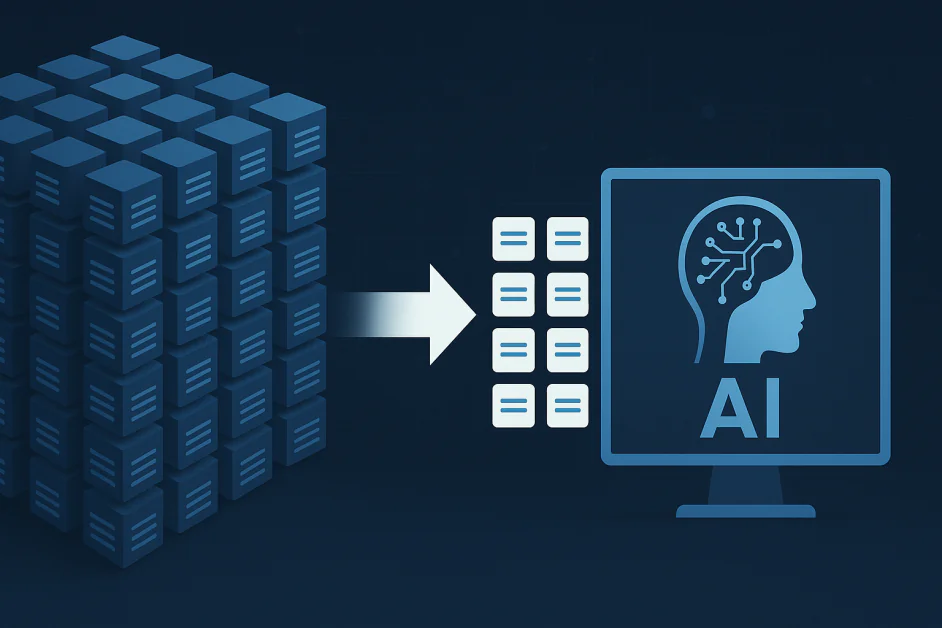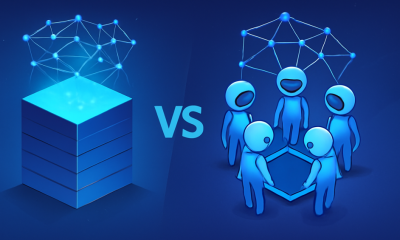Artificial Intelligence
How Google Cut AI Training Requirements by 10,000x

The artificial intelligence industry faces a fundamental paradox. While machines can now process data at massive scales, the learning remains surprisingly inefficient, facing the challenge of diminishing returns. Traditional machine learning approaches demand massive, labeled datasets that can cost millions of dollars and take years to create. These approaches typically operate under the belief that more data leads to better AI models. However, Google researchers have recently introduced an innovative method that challenges this long-standing belief. They demonstrate that similar AI performance can be achieved with up to 10,000 times less training data. This development has the potential to fundamentally change how we approach AI. In this article, we will explore how Google researchers achieved this breakthrough, the potential future impact of the development, and the challenges and directions ahead.
The Big Data Challenge in AI
For decades, the mantra “more data equals better AI” has driven the industry's approach to AI. Large language models like GPT-4 consume trillions of tokens during training. This data-hungry approach creates a significant barrier for organizations lacking extensive resources or specialized datasets. First, the cost of human labeling is significantly high. Expert annotators charge high rates, and the sheer volume of data needed makes projects expensive. Second, most of the collected data is often redundant and could not play a crucial role in the learning process. The traditional method also struggles with changing requirements. When policies shift or new types of problematic content emerge, companies must start the labeling process from scratch. This process creates a constant cycle of expensive data collection and model retraining.
Addressing Big Data Challenges with Active Learning
One of the known ways we can address these data challenges is through empowering active learning. This approach relies on a careful curation process that identifies the most valuable training examples for human labelling. The underlying idea is that models learn best from examples they find most confusing rather than passively consuming all available data. Unlike traditional AI methods, which require large datasets, active learning takes a more strategic approach by focusing on gathering only the most informative examples. This approach helps to avoid the inefficiency of labeling obvious or redundant data that provides little value to the model. Instead, active learning targets edge cases and uncertain examples that have the potential to improve model performance significantly.
By concentrating experts' effort on these key examples, active learning allows models to learn faster and more effectively with far fewer data points. This approach has the potential to address both the data bottleneck and the inefficiencies of traditional machine learning approaches.
Google's Active Learning Approach
Google's research team has successfully employed this paradigm. Their new active learning methodology demonstrates that carefully curated, high-quality examples can replace vast quantities of labelled data. For example, they show that models trained on fewer than 500 expert-labeled examples matched or exceeded the performance of systems trained on 100,000 traditional labels.
The process works through what Google calls an “LLM-as-Scout” system. The large language model first scans through vast amounts of unlabeled data, identifying cases where it feels most uncertain. These boundary cases represent the exact scenarios where the model needs human guidance to improve its decision-making. The process begins with an initial model that labels large datasets using basic prompts. The system then clusters examples by their predicted classifications and identifies regions where the model shows confusion between different categories. These overlapping clusters reveal the precise points where expert human judgment can become most valuable.
The methodology explicitly targets pairs of examples that lie closest together but carry different labels. These boundary cases represent the exact scenarios where human expertise matters the most. By concentrating expert labeling efforts on these confusing examples, the system achieves remarkable efficiency gains.
Quality Over Quantity
The research reveals a key finding regarding data quality that challenges a common assumption in AI. It demonstrates that expert labels, with their high fidelity, consistently outperform large-scale crowdsourced annotations. They measured this using Cohen's Kappa, a statistical tool that assesses how well the model's predictions align with expert opinions, beyond what would happen by chance. In Google's experiments, expert annotators achieved Cohen's Kappa scores above 0.8, significantly outperforming what crowdsourcing typically provides.
This higher consistency allows models to learn effectively from far fewer examples. In tests with Gemini Nano-1 and Nano-2, models matched or exceeded expert alignment using just 250–450 carefully selected examples as compared to around 100,000 random crowdsourced labels. That's a reduction of three to four orders of magnitude. However, the benefits are not just limited to using less data. Models trained with this approach often outperform those trained with traditional methods. For complex tasks and larger models, performance improvements reached 55–65% over the baseline, which shows more substantial and more reliable alignment with policy experts.
Why This Breakthrough Matters Now
This development comes at a critical time for the AI industry. As models grow larger and more sophisticated, the traditional approach of scaling training data has become increasingly unsustainable. The environmental cost of training massive models continues to grow, and the economic barriers to entry remain high for many organizations.
Google's method addresses multiple industry challenges simultaneously. The dramatic reduction in labeling costs makes AI development more accessible to smaller organizations and research teams. The faster iteration cycles enable rapid adaptation to changing requirements, which is essential in dynamic fields like content moderation or cybersecurity.
The approach also has broader implications for AI safety and reliability. By focusing on the cases where models are most uncertain, the method naturally identifies potential failure modes and edge cases. This process creates more robust systems that better understand their limitations.
The Broader Implications for AI Development
This breakthrough suggests we may be entering a new phase of AI development where efficiency matters more than scale. The traditional “bigger is better” approach to training data may give way to more sophisticated methods that prioritize data quality and strategic selection.
The environmental implications alone are significant. Training large AI models currently requires enormous computational resources and energy consumption. If similar performance can be achieved with dramatically less data, the carbon footprint of AI development could shrink substantially.
The democratizing effect could be equally important. Smaller research teams and organizations that previously couldn't afford massive data collection efforts now have a path to competitive AI systems. This development could accelerate innovation and create more diverse perspectives in AI development.
Limitations and Considerations
Despite its promising results, the methodology faces several practical challenges. The requirement for expert annotators with Cohen's Kappa scores above 0.8 may limit applicability in domains lacking sufficient expertise or clear evaluation criteria. The research primarily focuses on classification tasks and content safety applications. Whether the same dramatic improvements apply to other types of AI tasks like language generation or reasoning remains to be seen.
The iterative nature of active learning also introduces complexity compared to traditional batch processing approaches. Organizations must develop new workflows and infrastructure to support the query-response cycles that enable continuous model improvement.
Future research will likely explore automated approaches for maintaining expert-level annotation quality and developing domain-specific adaptations of the core methodology. The integration of active learning principles with other efficiency techniques, like parameter-efficient fine-tuning, could yield additional performance gains.
The Bottom Line
Google's research shows that targeted, high-quality data can be more effective than massive datasets. By focusing on labeling only the most valuable examples, they reduced training needs by up to 10,000 times while improving performance. This approach lowers costs, speeds up development, reduces environmental impact, and makes advanced AI more accessible. It marks a significant shift toward efficient and sustainable AI development.












